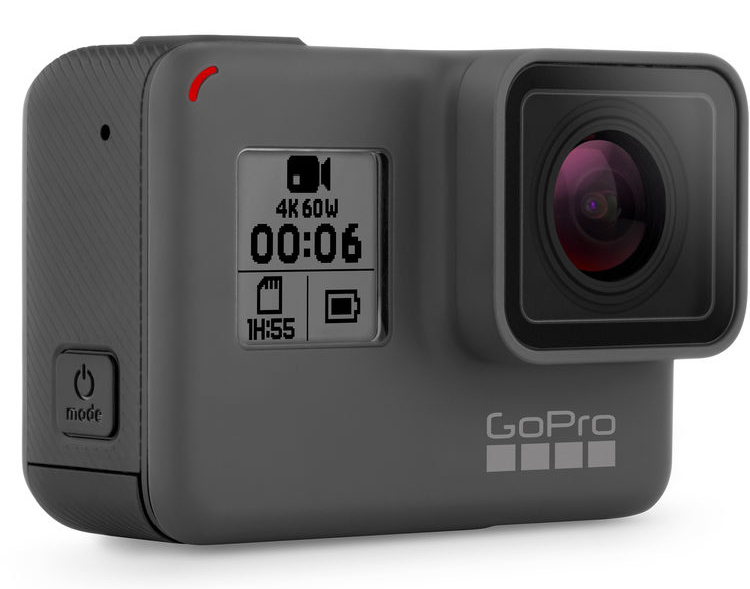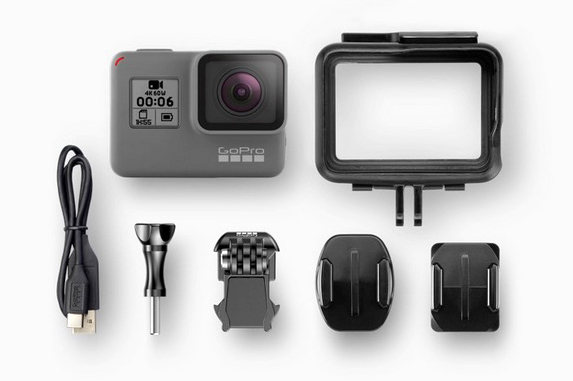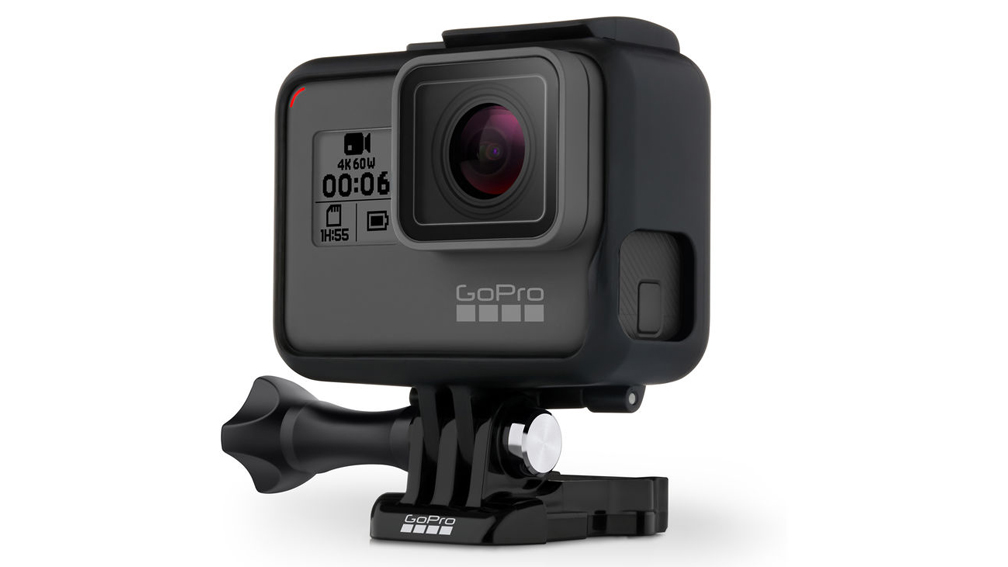A Much-Improved GoPro Model with a Few Limitations
Review by Erik Vlietinck
If you put a GoPro HERO5 and a HERO6 Black next to each other, you won’t notice any difference. The experience and results, though, are vastly different.
The first thing I noticed was that the HERO5’s lowest ISO is 400, while for the HERO6 it’s 100, and the HERO6 also lets you set a bracket for ISO sensitivity. The camera will then decide for itself which value in-between is best for a scene. Needless to say, this has a positive effect on noise, which is still visible when you’re shooting in scarcely lit locations, but less so than with other cameras. Let’s just say the HERO6 level of noise is something that you’d expect from a camera with a much bigger sensor.

A specification that caught my eye was the ability to shoot HDR photos. Normally, HDR requires a series of bracketed shots. The HERO6 can’t bracket shots, but the camera does intelligently expose different areas in a shot. When a dark, indoor scene has a brightly lit window, the HERO6 succeeds at keeping the bright areas more in check with the darker areas, and it does a good job of exposing the entire frame correctly without sacrificing contrast too much.
The new zoom option promised a lot of control over framing your shot, but it was a little disappointing, because you cannot actually zoom in while you’re shooting video. Of course, you’re only cropping the frame; but it would have been nice if that were possible, and it has other limitations as well. For example, zooming won’t work at all in 4K or 1080p/240. Still, it’s kind of nice that you have more control over framing the subject, both in video and photo mode.

Stabilization in the HERO6 is way better than it was in the HERO5, but sharpness suffers, with larger, evenly colored objects suffering the most. It’s still a lot better to use a Karma Grip instead.
Colors were more accurate. The ColorChecker Passport colors were less off with the HERO6 than with previous models.
A bit disappointing is the inability to shoot 720p at frame rates higher than 60 fps. Granted, you can now shoot in 1080p at 240 fps, but if you were able to shoot 720p/480…that would have been awesome. This was probably a design choice with an eye on unit temperature as the limiting factor. Having said that, the ability to shoot 1080p/240 or 2.7K/120 without the camera overheating after a few seconds is kind of mind-boggling.
The ability to shoot 4K/60 is even nicer, and having 4K and 2.7K in 4:3 formats is absolutely wonderful. With the higher frame rates, when downscaled properly, come crisper footage than you could ever imagine from such a small sensor, while the 4:3 ratio gives you extra framing control for footage you’ll output in 16:9 format, by allowing you to move the clip vertically inside the frame.

What makes the whole thing truly superb is that the most demanding mode/speed combinations are recorded in HEVC (H.265), which allows for a very decent bitrate and problem-free editing, even on older Macs.
But, as with all things in life, there are disappointments too. One big disappointment is that you can’t record to 4K via the HDMI out port, which is something you can do with a HERO5. GoPro should really be clearer in their communications about this. Judging from the company’s forum comments, most customers consider the ability to send only 1080p/60 to an external monitor/recorder a big step backwards from the previous model. ■






